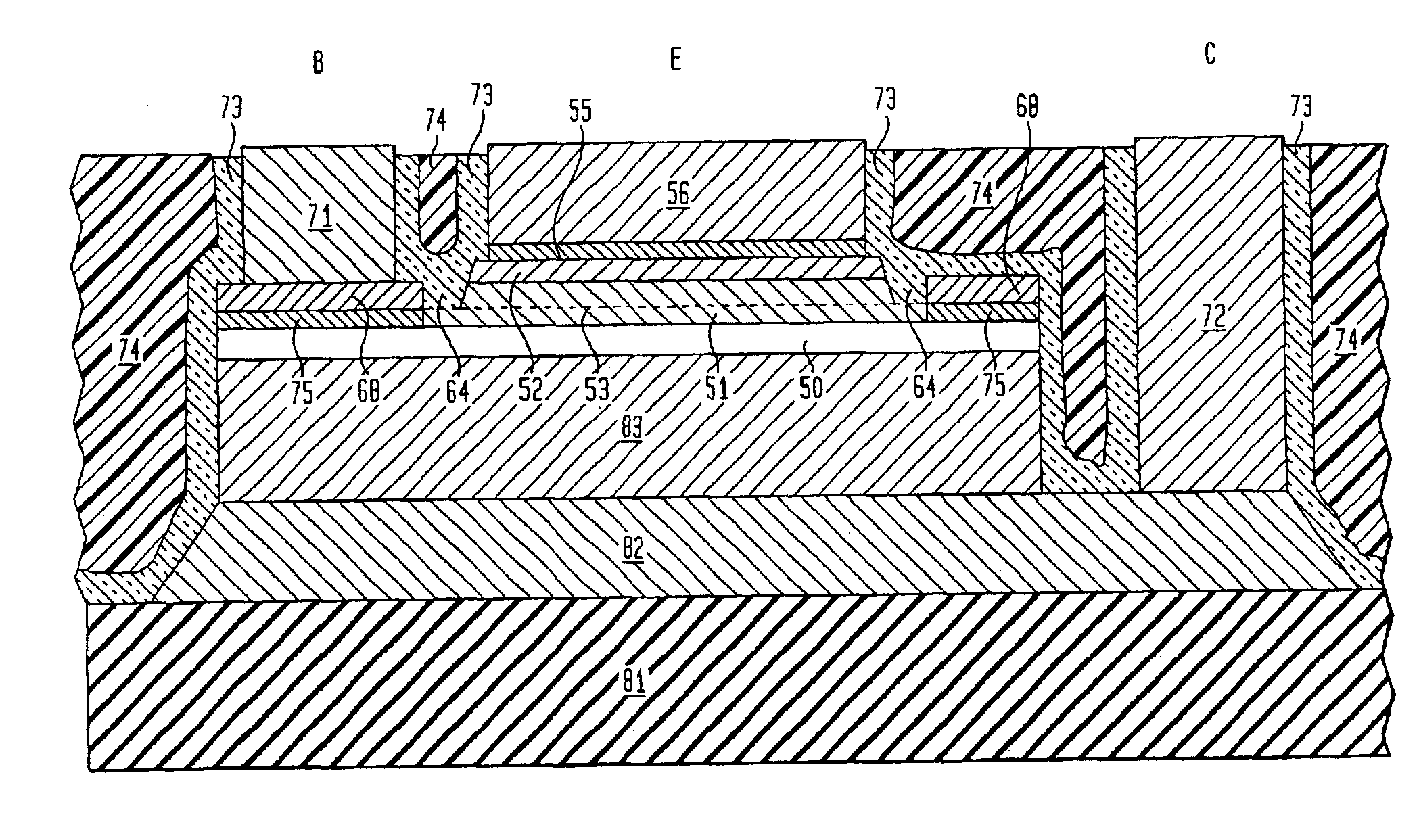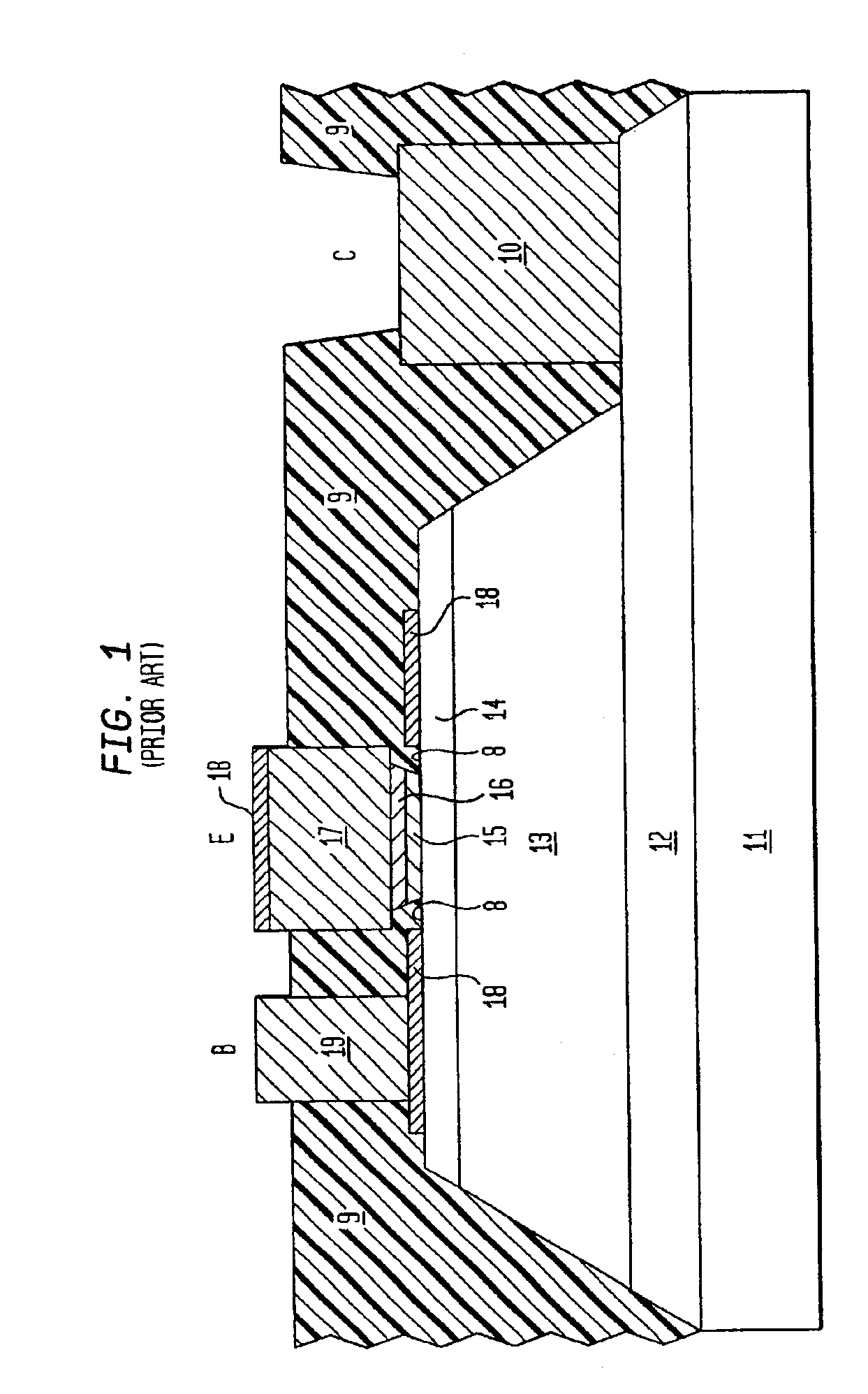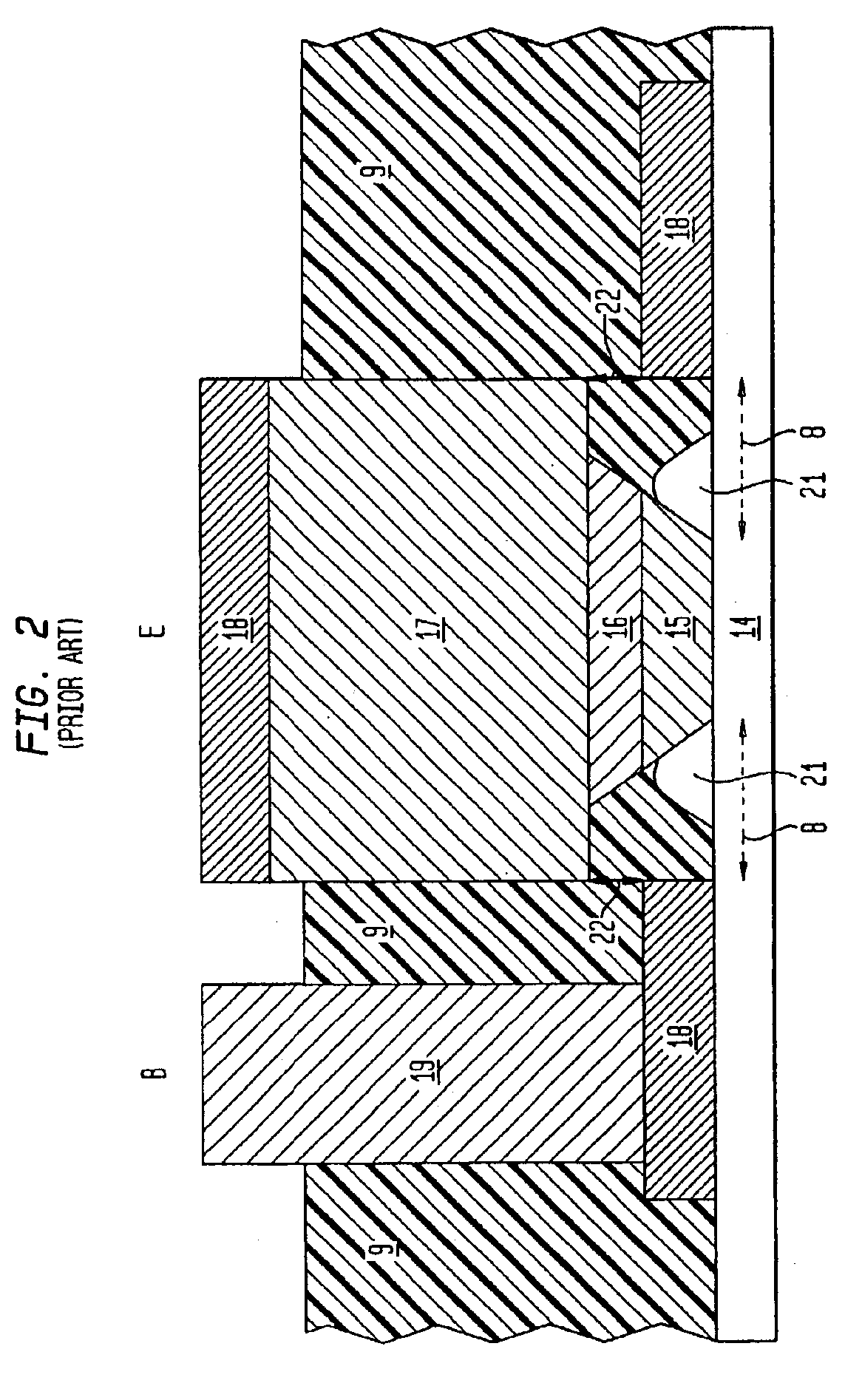Method and apparatus for a self-aligned heterojunction bipolar transistor using dielectric assisted metal liftoff process
a technology of heterojunction bipolar transistor and liftoff process, which is applied in the field of self-aligned heterojunction bipolar transistor, can solve the problems of insufficient reliability of hbt devices to incorporate these ics, the inability to completely symmetrical the transistor, etc., to achieve the effect of improving etch control, reducing the etching and sputtering of the emitter metal, and improving chemical vapor deposition
- Summary
- Abstract
- Description
- Claims
- Application Information
AI Technical Summary
Benefits of technology
Problems solved by technology
Method used
Image
Examples
Embodiment Construction
[0063]As required, a detailed illustrative embodiment of the present invention is disclosed herein. However, techniques, systems and operating structures in accordance with the present invention may be embodied in a wide variety of forms and modes, some of which may be quite different from those in the disclosed embodiment. Consequently, the specific structural and functional details disclosed herein are merely representative, yet in that regard, they are deemed to afford the best embodiment for purposes of disclosure and to provide a basis for the claims herein which define the scope of the present invention. It should be noted that those individuals skilled in the art may be able to make some modifications of the preferred embodiments but which are based upon the underlying teachings contained within this subject invention.
[0064]The present invention relates to the method of manufacturing a self-aligned HBT compound semiconductor using a dielectric-assisted metal lift-off process ...
PUM
 Login to View More
Login to View More Abstract
Description
Claims
Application Information
 Login to View More
Login to View More - R&D
- Intellectual Property
- Life Sciences
- Materials
- Tech Scout
- Unparalleled Data Quality
- Higher Quality Content
- 60% Fewer Hallucinations
Browse by: Latest US Patents, China's latest patents, Technical Efficacy Thesaurus, Application Domain, Technology Topic, Popular Technical Reports.
© 2025 PatSnap. All rights reserved.Legal|Privacy policy|Modern Slavery Act Transparency Statement|Sitemap|About US| Contact US: help@patsnap.com



